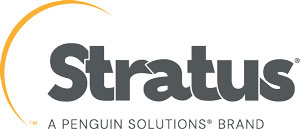Stratus’s integrated everRun Disaster Recovery add-on feature will give you unprecedented protection in the data center and at the edge so you can continue to run your business, maintaining compliance and business continuity; no matter what happens. Deploy all your applications on everRun and get the benefit of DR protection.
Snapshotting Technology Benefits
Disaster Recovery is achieved with snapshotting technology to provide the following benefits:
-
Save Money and Time
Disaster recovery is built into everRun so there’s no need to purchase a separate disaster recovery solution or spend time and resources to deploy one because it’s already there.
-
Get Up and Running Faster Than Ever Before
Downtime results in lost revenue impacting your bottom line. With system-to-system DR you’ll achieve better RPOs and faster RTOs than file restoration methods, minimizing the impact a disaster will have on your bottom line.
-
Get Control
Restart your applications from a pre-determined point in time to get control of your data enabling you to execute on your business continuity plan.
-
Simple To Use
Manage all your DR sources and targets from the Stratus One View Console – a centralized, easy to use interface. This is especially helpful for applications being used at the edge of the nework.
-
Fast & Consistent Restoration
Consistently restores the OS, applications and data quickly without the need for in-guest agents. Supports Windows Volume Shadow Copy Service for application consistent snapshots.
How It Works
The production/primary location runs everRun in fault-tolerant or high availability mode. The DR location, which can be anywhere, runs everRun in disaster recovery mode. You decide which virtual machine (VM) will run in DR mode and designate them as such through the easy user interface located in the Stratus One View Console.
Disaster Recovery is achieved with snapshotting technology. The built-in snapshot mechanism is designed to facilitate point-in-time backup copies of a running VM. A snapshot can be used to test an update or to save the VMs state for later use (to recover to an earlier version or state, for example).
The user selects which VM to protect with DR and a snapshot of that VM is made. Then the snapshot is sent to the single node at the DR location. Subsequent snapshots are incremental deltas relative to the previous snapshot; that is, only the new and changed data is replicated to the DR instance. When disaster has hit and the administrator has verified that the primary site or system cannot be easily revived, a failover to the DR instance can be performed in minutes. Any data loss will be less than the configured RPO. The DR instance can be started from any of the retained snapshots. Once the primary site or system has been recovered, the administrator can migrate the application back with no data loss and just a brief interruption in application availability. The administrator can also migrate to the DR instance without any data loss when preparing for primary site maintenance work. This migration requires a brief interruption in application availability.
To calculate the RPO for your data and network throughput, download the calculator:




